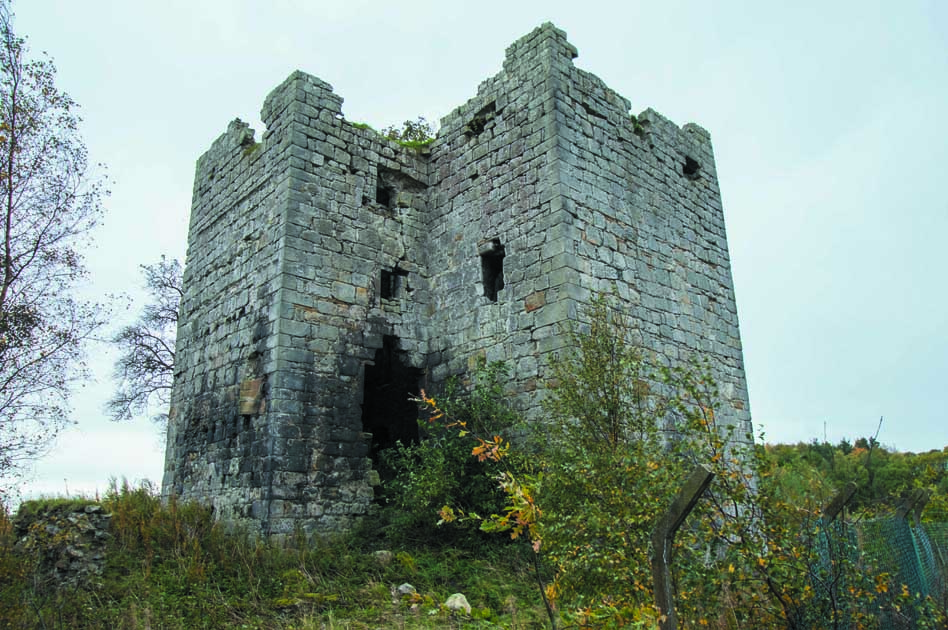Almond Castle

Almond Castle Details
Almond Castle, ruined C15 tower of the Crawfords extended by Livingstones C16, Forfeited and abandoned C18
- Closest To: Bo'Ness, Linlithgow, Whitecross, Grangemouth, Maddiston, Polmont, Falkirk
- Access: S.O.A.C. Public Access
- Grid Reference: NS956773
Almond Castle is a ruined 15th/16th century tower house which is surrounded by safety fencing and is in the middle of a largely demolished industrial area that used to house the Haining Brickworks. The castle is in a dangerous condition with risk to life from falling masonry, although the fencing is easily passed due to collapse. The castle consists of an L-plan tower of four storeys, dating to the late 15th or very early 16th century, and which is constructed of worked ashlar blocks. This building was extended with further ranges of buildings that wrapped around the old tower in the 16th century in at least two phases. The basement level has a large vault beneath the main hall and a cellar beneath the stair wing. The vault is partially collapsed in the main building, with significant cracking to the structure. The entrance to the tower house was at first floor level in the south-east wall, opening into a small lobby with a winding stair in the thickness of the wall to the east. The great hall occupied the entire first floor of the main building, the kitchen was in the wing. Today the re-entrant angle has collapsed at this level, which is presumably where most people gain access, but whether there was a door here originally is questionable. The second floor shows no signs of subdivision, but would have contained the chambers of the lord, so presumably it was not all one room, and the winding stair carries on upwards to the third floor, vaulted fourth floor/attic, and wallwalk. The newer buildings to the south are badly ruined and overgrown, making them hard to understand, but early images show they were lower than the rest at two storeys and an attic.
The lands of Haining were first named such in 1424, when Sir William Crawford and his wife resigned the estate to their son Reginald. They were part of the barony of Manuel, which probably equated to the parish of Muiravonside, in the 12th century, when it was held by Reginald Prat of Tynedale and granted to his daughter Margaret and her husband Richard Melville. This barony was probably broken up in the time of Robert Bruce, and the part which was to become known as Haining was in William’s hands by about 1400. Reginald was followed by Rankine and Rankine by Robert Crawford, who died in about 1498, to be succeeded by his son Archibald. In 1541 Archibald had been succeeded by his son William, who died in 1542, leaving two daughters who were wards of Lord Livingston. It was, therefore, the Crawfords who had the L-plan tower erected. The elder daughter, Agnes, received her half of the estate including the castle in 1546, and by 1551 Agnes was married to Lord Livingston’s brother Thomas, and had bought her younger sister Margaret out of her inheritance. When Agnes died in 1565, their son Thomas was to succeed, and it is likely that the Livingstons were responsible for the wrap-around extension to the old tower. The estate and castle remained in the hands of the Livingston family until the 1715 Jacobite revolt, when they were forfeited. It was purchased by the asset-stripping York Buildings Company, and was later sold to William Forbes in 1791, by which time the castle had been stripped of everything of value, was uninhabited, and may have been unroofed.
Become a supporter of my work to access a more detailed history